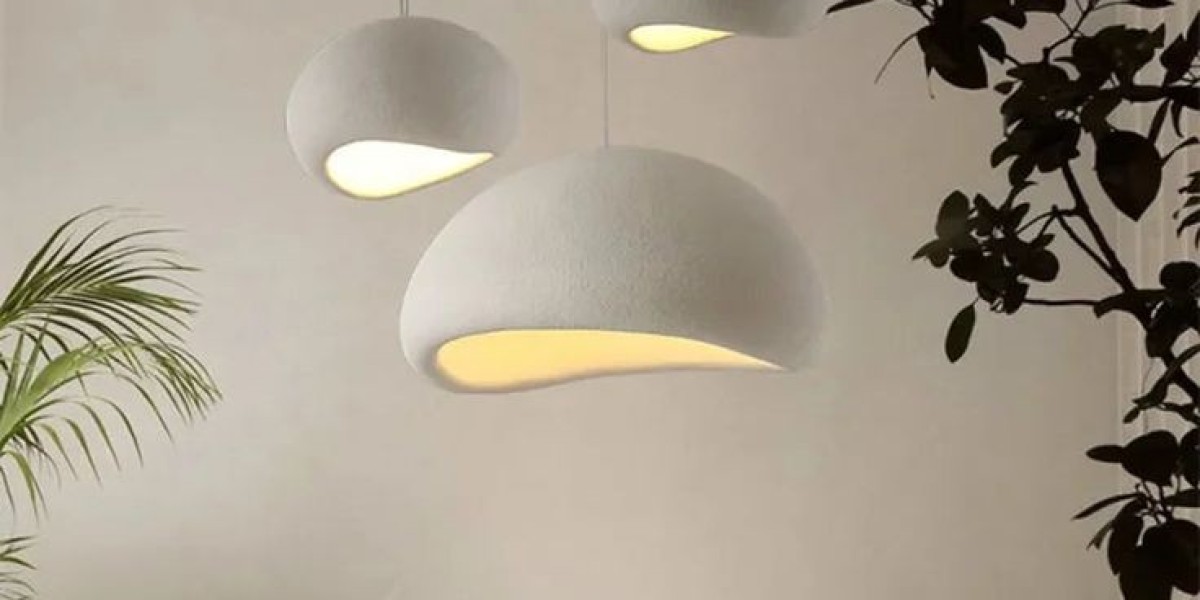Lighting plays a pivotal role in interior design, shaping the ambiance, functionality, and aesthetic appeal of any space. Among the various lighting options, ceiling lights hold a prominent place in defining the character of contemporary interiors. Whether you’re redesigning your home or creating a new space, understanding how to choose and incorporate ceiling lighting can elevate your design. This guide delves into the key aspects of ceiling lighting, focusing on pendant ceiling lights and wall lights to help you achieve a modern and inviting look.
Why Ceiling Lighting Matters in Contemporary Interiors
Ceiling lighting does more than illuminate a room. It sets the tone, enhances architectural features, and creates a balanced environment. In contemporary interiors, ceiling lights serve as functional art, blending innovative designs with practical lighting solutions. They can:
Highlight focal points in a room.
Complement minimalistic or bold design themes.
Provide layered lighting for enhanced functionality.
Enhance the perceived size and depth of a space.
Exploring Pendant Ceiling Lights
What Are Pendant Ceiling Lights?
Pendant ceiling lights are suspended fixtures that hang from the ceiling, often characterized by their versatility and ability to add a dramatic flair. They come in a variety of styles, shapes, and materials, making them a popular choice for contemporary interiors.
Advantages of Pendant Ceiling Lights
Versatility: From kitchens to living rooms, pendant lights can be adapted to suit different spaces and purposes.
Aesthetic Appeal: Their unique designs can serve as statement pieces in your decor.
Focused Lighting: Ideal for task-oriented areas like kitchen islands and dining tables.
Space Optimization: Pendant lights free up floor and wall space while providing ample illumination.
Types of Pendant Ceiling Lights for Contemporary Spaces
Cluster Pendants: Multiple lights grouped together for a dramatic effect.
Linear Pendants: Sleek and minimalistic, perfect for long dining tables or countertops.
Globe Pendants: Featuring spherical shapes, these lights exude a modern yet timeless vibe.
Drum Pendants: With a fabric or metal drum shade, they’re ideal for soft, diffused lighting.
Geometric Pendants: Featuring angular designs, these lights complement bold and artistic interiors.
Choosing the Right Pendant Ceiling Lights
Consider Scale: Large pendants work well in spacious rooms, while smaller fixtures suit compact spaces.
Focus on Functionality: Determine whether the light will be used for ambient, task, or accent lighting.
Harmonize with Decor: Choose materials and finishes that align with your interior design theme.
The Role of Wall Lights in Modern Interiors
Why Wall Lights?
Wall lights are a versatile addition to ceiling lighting, offering layered illumination and enhancing the overall ambiance of a room. They’re perfect for:
Creating focal points.
Adding warmth to spaces.
Improving task lighting in specific areas.
Providing subtle, indirect illumination.
Types of Wall Lights for Contemporary Interiors
Sconces: Classic fixtures that direct light upwards or downwards, ideal for hallways and bedrooms.
Swing Arm Lights: Adjustable fixtures perfect for reading nooks or workspaces.
Picture Lights: Designed to highlight artwork and decorative elements.
Recessed Wall Lights: Embedded into walls for a sleek and unobtrusive look.
LED Strips: Modern and energy-efficient, they’re great for accentuating architectural features.
Benefits of Combining Wall Lights with Ceiling Lighting
Layered Lighting: Achieve depth and dimension by combining ceiling lights and wall lights.
Enhanced Ambiance: Wall lights create a cozy and inviting atmosphere.
Increased Functionality: Provide additional light for specific tasks or areas.
Aesthetic Cohesion: Harmonize different lighting elements for a balanced design.
Designing with Pendant Ceiling Lights and Wall Lights
Creating Zones with Lighting
In contemporary interiors, lighting can be used to define distinct zones within open-plan spaces. For example:
Use pendant ceiling lights to highlight a dining area.
Incorporate wall lights to delineate a reading corner or workspace.
Mixing and Matching Styles
While pendant ceiling lights and wall lights can be statement pieces on their own, combining them strategically can elevate your design. Consider:
Mixing materials like metal and glass for a dynamic look.
Pairing bold pendant lights with subtle wall sconces for balance.
Using complementary shapes and colors to create visual harmony.
Adjusting Light Temperature and Intensity
Warm Light: Ideal for creating a cozy atmosphere in living rooms and bedrooms.
Cool Light: Best for task-oriented spaces like kitchens and offices.
Dimmable Options: Allow flexibility in adjusting light intensity based on the time of day or activity.
Tips for Choosing Ceiling Lighting for Contemporary Interiors
Understand Your Space: Evaluate the size, ceiling height, and layout of your room.
Prioritize Energy Efficiency: Opt for LED fixtures to save energy and reduce maintenance.
Consider Maintenance: Choose easy-to-clean materials, especially for lights in kitchens and bathrooms.
Experiment with Placement: Try unconventional placements for a unique and modern look.
Hire Professionals: For complex installations, consult lighting designers or electricians.
Common Mistakes to Avoid
Overlooking Scale: Ensure that your pendant lights and wall lights are proportionate to your room size.
Ignoring Layering: Relying solely on ceiling lights can result in flat and uninspiring lighting.
Choosing Style Over Function: Ensure that your lights meet the functional needs of your space.
Poor Placement: Incorrect positioning can lead to uneven illumination or glare.
Skipping Dimmer Switches: These provide flexibility and control over your lighting atmosphere.
Trending Designs for Ceiling and Wall Lighting
Industrial Chic: Metal and exposed bulb designs for a raw, edgy look.
Minimalist Modern: Clean lines and neutral tones that emphasize simplicity.
Art Deco Revival: Bold geometric patterns and luxurious finishes.
Eco-Friendly Fixtures: Sustainable materials and energy-efficient designs.
Smart Lighting: Fixtures integrated with smart home systems for convenience.
Conclusion
Ceiling lighting is a cornerstone of contemporary interior design, offering both functional and aesthetic benefits. Pendant ceiling lights and wall lights are versatile options that can transform your space, providing the perfect blend of style and utility. By understanding their roles and how to integrate them effectively, you can create a harmonious and visually striking environment that reflects modern design principles. Whether you prefer the dramatic impact of a statement pendant or the subtle charm of a wall sconce, the key lies in thoughtful selection and strategic placement to illuminate your home with elegance and purpose.








